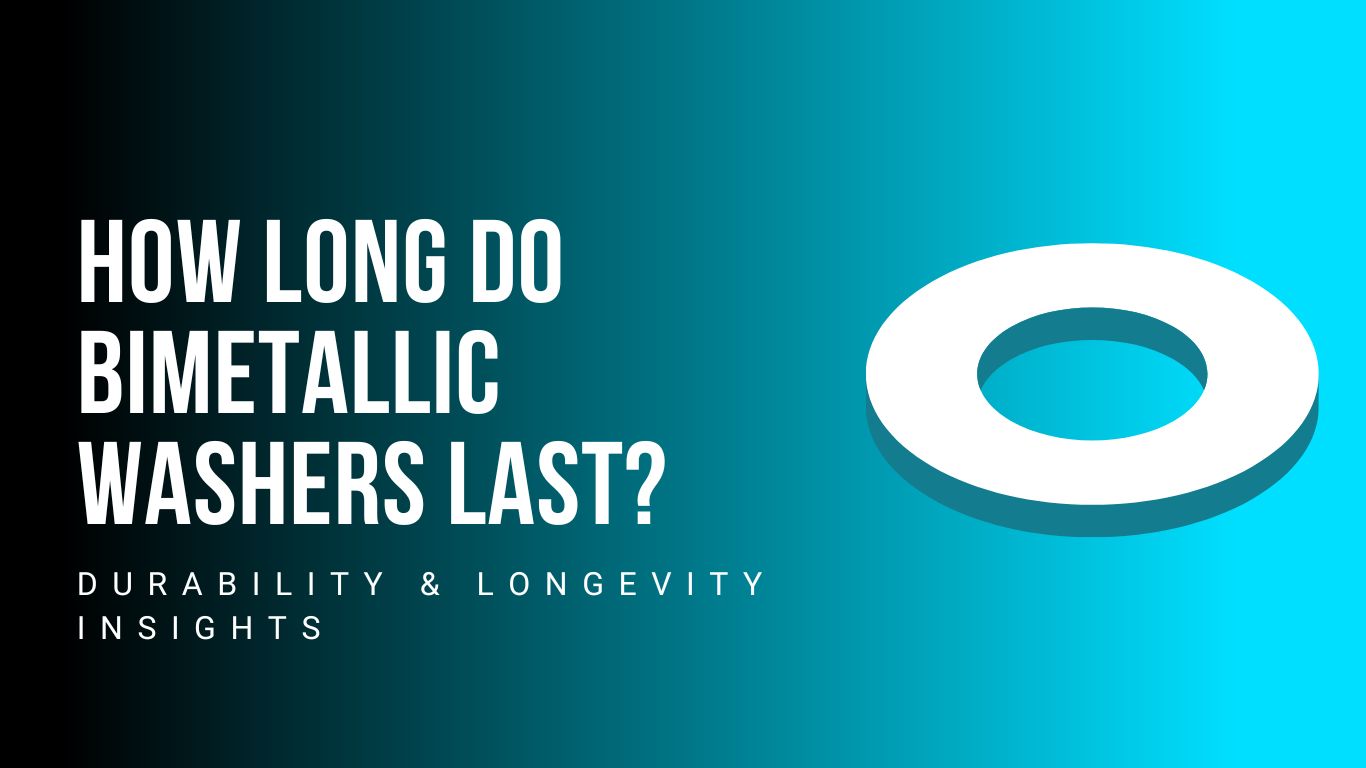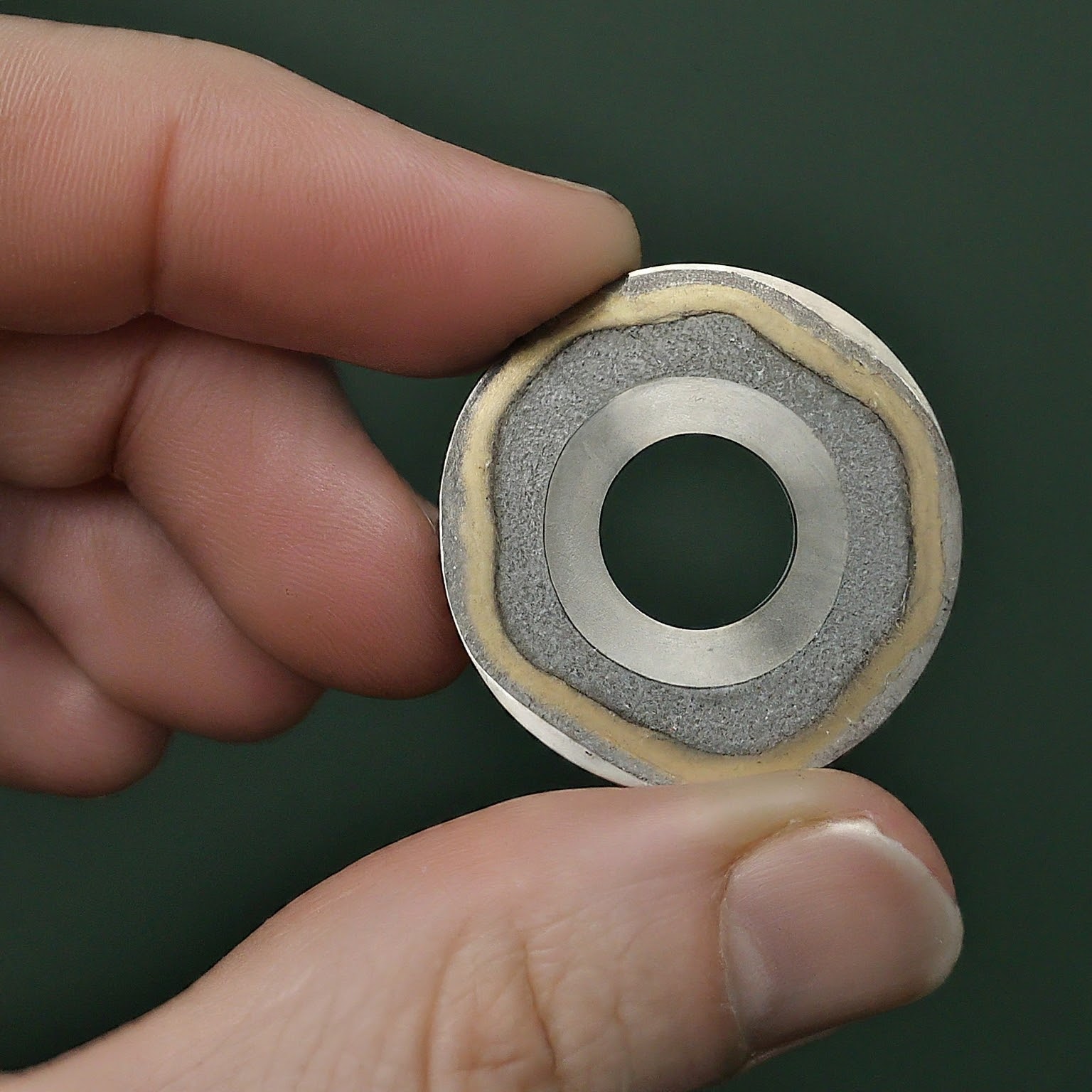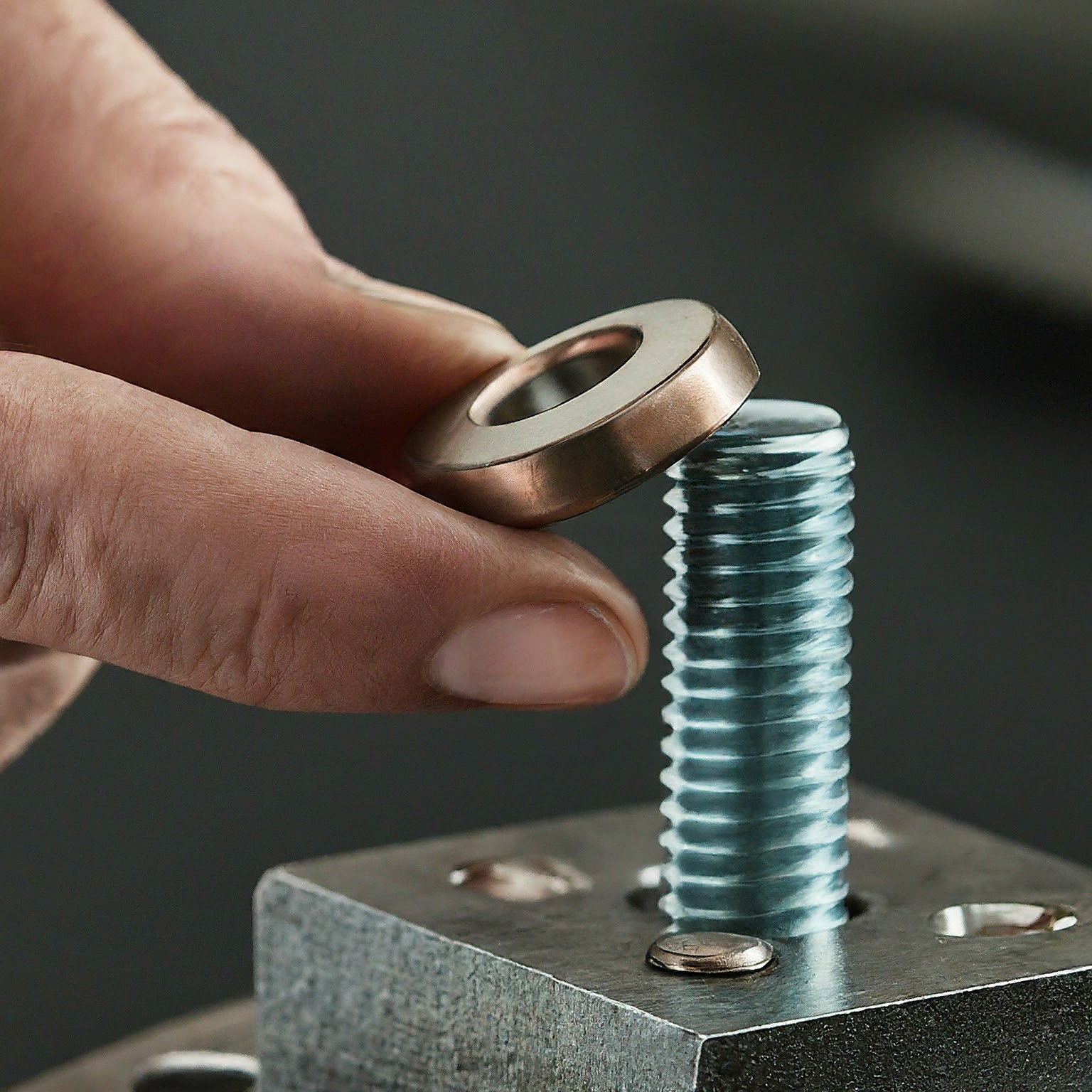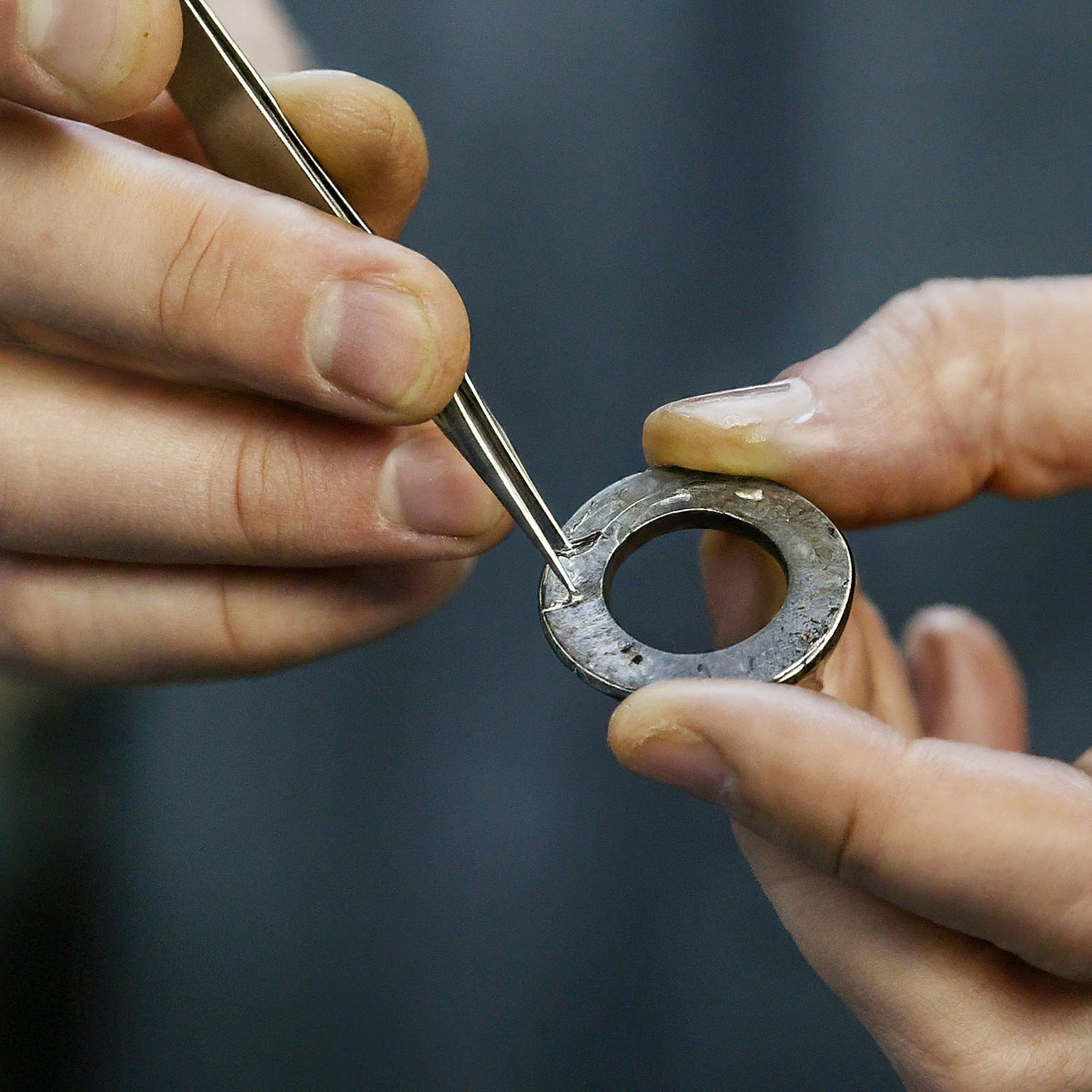How Long Do Bimetallic Washers Last? | Durability & Longevity Insights

Bimetallic washers are innovative components used in various industries to ensure reliable connections between parts. Made from two different metals bonded together, they offer enhanced properties like strength, corrosion resistance, and thermal stability. You might be wondering, "How long do bimetallic washers last?" Let’s explore this topic and see how factors affect their lifespan and how to maximize their durability.
Table of Contents:
- Factors Affecting the Longevity of Bimetallic Washers
- Typical Lifespan of Bimetallic Washers
- Maintenance Tips to Extend the Life of Bimetallic Washers
- Comparing Bimetallic Washers to Other Types
- Choosing the Right Bimetallic Washer for Longevity
- Conclusion
Factors Affecting the Longevity of Bimetallic Washers
Understanding the factors that impact the longevity of bimetallic washers will help you make informed decisions about their use. Here are some key aspects:
Material Composition: The choice of metals used in bimetallic washers affects their durability. Common combinations include stainless steel shims and copper or aluminum. Each metal has unique properties that influence the washer’s lifespan.
Environmental Conditions: Exposure to harsh environments can impact the longevity of bimetallic washers. Factors like temperature fluctuations, humidity, and exposure to chemicals or corrosive substances can cause wear and tear. For example, bimetallic washers used in outdoor settings might need to resist UV rays and moisture.
Load and Stress: The amount of stress and load applied to the washers affects their longevity. Excessive pressure or repetitive motion can lead to deformation or failure over time. Choosing the right bimetallic washers for your specific load requirements is essential.
Installation Quality: Proper installation ensures that bimetallic washers perform as intended. Incorrect installation, such as improper torque or alignment, can lead to premature wear or damage. Following manufacturer guidelines and using appropriate tools can prevent these issues.
Maintenance Practices: Regular maintenance and inspections can help extend the lifespan of bimetallic washers. Checking for signs of wear, corrosion, or damage allows you to address potential issues before they become severe.
Typical Lifespan of Bimetallic Washers
The lifespan of bimetallic washers varies depending on their application and operating conditions. Generally, you can expect the following:
- Standard Applications: In typical industrial settings with moderate loads and controlled environments, bimetallic washers can last several years. For instance, if you use bimetallic washers in machinery or automotive components, they might last between 5 to 10 years, depending on usage and maintenance.
- Harsh Environments: In more demanding conditions, such as high temperatures or corrosive environments, the lifespan may be shorter. bimetallic washers exposed to extreme conditions may need replacement every 1 to 3 years.
- Specialized Applications: For high-precision or critical applications, bimetallic washers may need to be inspected and replaced more frequently. In aerospace or high-performance engineering, even small wear or degradation can impact performance, so regular checks are essential.

Maintenance Tips to Extend the Life of Bimetallic Washers
Once your prototype is ready for production, shim plates continue to play a crucial role in ensuring smooth manufacturing processes. Here’s how they enhance efficiency:
- Regular Inspections: Periodically check bimetallic washers for signs of wear, corrosion, or deformation. Early detection of issues can prevent more significant problems.
- Clean Environment: Keep the area around the washers clean and free from debris. Accumulated dirt or contaminants can contribute to premature wear.
- Proper Lubrication: In some applications, lubricating the washers can reduce friction and wear. Ensure you use the right type of lubricant compatible with the metals used in bimetallic washers.
- Correct Installation: Follow the manufacturer’s installation instructions carefully. Proper torque settings and alignment are crucial for the washers’ performance and longevity.
- Address Issues Promptly: If you notice any signs of damage or degradation, address them immediately. Replacing worn-out washers before they fail completely can prevent damage to other components.

Comparing Bimetallic Washers to Other Types
When considering bimetallic washers, it’s helpful to compare them with other types:
- Single-Metal Washers: Unlike bimetallic washers, single-metal washers are made from one material, which can limit their performance in certain conditions. It offers enhanced properties due to the combination of metals.
- Composite Washers: Composite washers often combine different materials to achieve specific properties, similar to bimetallic washers. However, bimetallic washers are specifically designed to provide unique benefits from the combination of two metals.
- Plastic Washers: Plastic washers offer flexibility and resistance to certain chemicals but may not match the strength and durability of bimetallic washers in high-load or high-temperature applications.

Choosing the Right Bimetallic Washer for Longevity
Selecting the appropriate bimetallic washers involves considering several factors:
- Application Requirements: Match the washer to your specific application, considering factors like load, temperature, and exposure to chemicals.
- Quality and Manufacturer: Choose high-quality washers from reputable suppliers. Explore options from bimetallic washers manufacturers or shim manufacturers who offer reliable products.
- Custom Solutions: In some cases, custom bimetallic washers might be necessary to meet precise requirements. Consult with shim washer manufacturers India or stainless steel shim manufacturers for tailored solutions.
Conclusion
The lifespan of bimetallic washers depends on various factors including material composition, environmental conditions, and proper maintenance. By understanding these factors and following best practices, you can maximize the durability and performance of your bimetallic washers. Whether you’re using them in industrial, automotive, or specialized applications, proper care and selection will ensure you get the most out of these versatile components.
About Sachin Shim
Our range of shims includes metal, machine, industrial, precision, adjustable, machinery, engineering, custom, and alignment shims. These shims are designed for various applications, such as machinery alignment, fine adjustments in industrial-grade machines, engineering projects requiring steel shims, heavy-duty machinery requiring versatile metal shims, aerospace applications demanding precision stainless steel shims, automotive use requiring adjustable aluminum shims, precision engineering projects using high-quality brass shims, construction applications requiring durable plastic shims, specialized machinery needing customized shim solutions, and manufacturing processes requiring fine-tuning shims for precise alignment and accurate machine setup and leveling.
Author
Meet Sachin, our expert author in industrial materials with a deep understanding of brass shim sheets. With years of experience, Sachin brings valuable insights and expertise to this guide, making him a trusted source for all things related to brass shim sheets. Join us as we delve intothe art of crafting brass shim sheets with Sachin leading the way.
List Other similar blogs







